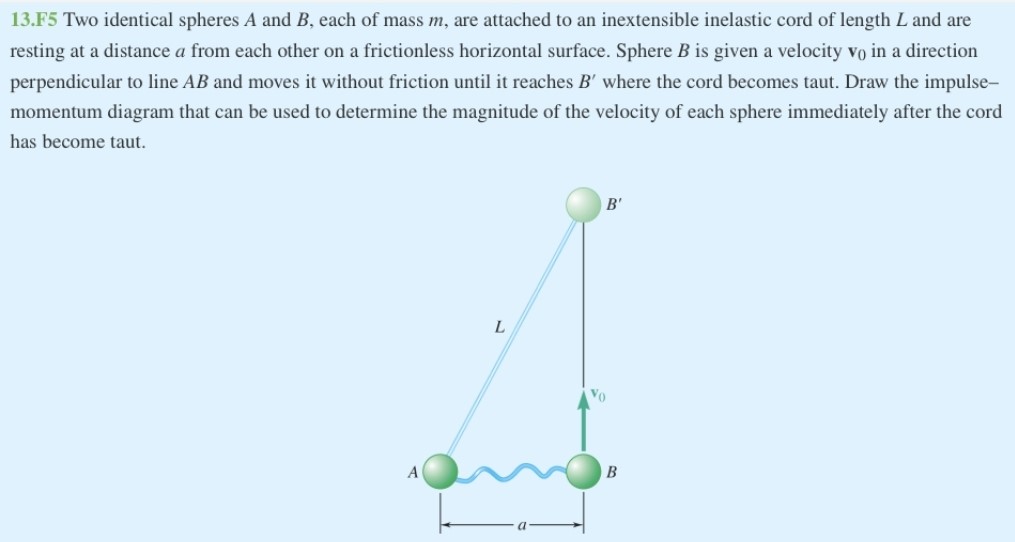13.F5 Two identical spheres A and B, each of mass m, are attached to an inextensible inelastic cord of length L and are resting at a distance a from each other on a frictionless horizontal surface. Sphere B is given a velocity v0 in a direction perpendicular to line AB and moves it without friction until it reaches B′ where the cord becomes taut. Draw the impulse-momentum diagram that can be used to determine the magnitude of the velocity of each sphere immediately after the cord has become taut.
